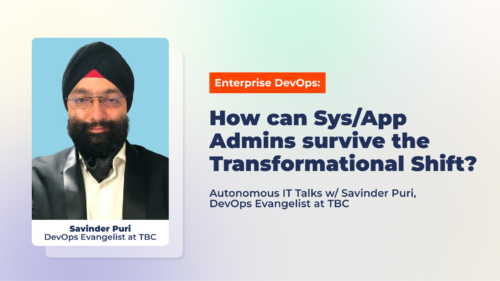The complexity of enterprise IT and software-driven commercial product development is accelerating. The internet provides IT infrastructure services from enormous data facilities spread around the globe. With new internet launches, consumers demand speedy feature enhancements as well.
To achieve these end-user expectations, IT service providers and businesses must increase the reliability and stability of backend IT operations, despite the inherent complexity of IT systems. To optimize the system’s dependability, we closely observe and monitor indicators and statistics relating to infrastructural effectiveness.
There are some striking parallels between observability and monitoring. Both need the acquisition of several data sets in some parts. Both aim at assisting teams in identifying issues with their software frameworks and providing an excellent experience for users.
Yet, they are not the same. Speaking about observability vs. monitoring, we are discussing two different aspects of information technology. Let us see some key differences between the two.
Observability vs. Monitoring

Following are the key differences between observability and monitoring:
Definition
The capability to evaluate a system’s internal states by studying its outputs is known as observability. If you can assess the current state of an IT system only using information from output datasets, such as sensor data, the system is deemed “observable.”
Further, it enables teams to examine what’s going on in context across multi-cloud setups to identify and fix the root causes of problems.
On the other hand, monitoring is the process of gathering, evaluating, and interpreting data to follow a program’s progress toward its goals and make managerial decisions.
Monitoring is concerned with keeping track of specific metrics. Monitoring is indeed an action you take to improve your system’s observability.
Determining What Is Important
Monitoring necessitates anticipating what needs to be monitored.
On the other hand, observability enables one to figure out what is vital by viewing how the system operates over time and asking critical questions.
Fixing The Wrongs
Monitoring notifies you when something goes wrong. You only know something is faulty if you monitor it, not how to correct it. A monitoring tool, for example, may inform you that your application’s response rate is no longer appropriate.
Whereas, observability goes a step further by assisting you in determining what is wrong and how to correct it.
So, in our example, observability determines which microservices inside the application are causing the issue. You can use an incident management platform to plan and execute an adequate response to dependability issues based on such information.
Choosing Between Process and Potential
Monitoring is the act of observing something. When monitoring takes place, the events and applications the system will track have already been decided.
Simply put, monitoring identifies specific occurrences throughout the system and generates artifacts and reports that are incorporated into overall metrics.
On the other hand, observability allows monitoring of various events throughout the pipeline including the entire software development process.
Kind Of Concept: Broad Or Wide
Monitoring has long become a known concept and idea that allows you to evaluate trends, dashboards, and alarms by providing a broad perspective of system activity and performance.
While observability complements monitoring. It offers a deep state of all system components by employing multiple telemetric channels.
Sustainability Of The Approach
Observability is a long-term and sustainable strategy because it improves incident management and quality control. It assists you in obtaining actionable information for better decision-making and a quicker feedback chain. As a result, it contributes to superior product generation.
Meanwhile, you could monitor without observing. However, this would limit your capacity to identify and fix issues. Thus, monitoring is a limited approach that cannot function alone.
Single Plane Or Map Approach
Observability is the ability to map an environment and then navigate that map smoothly to gain a better knowledge of what the situation is. Finally, you can fix it then.
For the most part, you can apply monitoring on a single plane. When a known scenario occurs, you put up rules, aggregations, and alarms for the same.
Reliance On Data
Observability relies on sampling data. It employs sample data to determine if a system will generate enough useful data for personnel to deduce its internal state from its exterior outputs.
On the other hand, monitoring relies heavily on the raw dataset. Monitoring software collects data, displays a specified set of metrics and logs, and detects known issues such as errors, traffic, slowness, and saturation.
Use Of Metrics
In this context, let us first see what metrics are. Metrics refer to measures taken over time. There are a few types of metrics as mentioned below.
Firstly, cumulative metrics track changes over time, such as the amount of API function call failures returned in the last hour. Then, one uses delta metrics to capture variations between prior and current data, such as a change in throughput since it was measured previously.
So, observability generates these metrics for the system whereas monitoring involves collecting these metrics.
Importance
Even with a complicated microservice design, observability enables us to understand the internal components of a system. Thus, it is easier to go from the effects to the cause. It assists you in locating solutions for performance bottlenecks and request execution in the existing system.
Monitoring is a critical component of developing and operating microservice-based systems. If your monitoring rules and metrics are simple and focused on the data, you’ll get a good picture of your system working.
What Is Better? Observability vs. Monitoring

Monitoring displays overall system performance because it focuses on metrics like utilization rates and throughput. However, monitoring usually provides a skewed perspective of system data, focusing on specific indicators. When the failure mechanisms of a system are sufficiently understood, this strategy is sufficient.
Database managers and engineers with a lot of experience can notice trends that lead to difficulties. Thus, monitoring is beneficial when we understand how systems fail.
However, failure modes become more complex as applications become more advanced. It’s cumbersome to forecast how apps will fail in most cases. You can comprehend the internal status of a system by observing it and then figuring out what isn’t operating correctly and why.
In current applications, associations between a few indicators are frequently insufficient to pinpoint issues rightly. Therefore, these modern and complicated applications necessitate greater system visibility, which is possible to achieve through a mix of observability and more effective monitoring tools.
What is Application Performance Management?

As the volume of data that companies generate and process continues to grow, it has become increasingly important to monitor and manage that data in real-time. Application Performance Management (APM) is a vital tool for monitoring data and ensuring that data-intensive applications are performing optimally. By providing real-time insights into application performance, APM can help organizations make informed decisions about how to allocate resources and optimize data usage.
APM is essential in data monitoring because it provides visibility into how data is being processed and how applications are performing. Without APM, organizations would be blind to any issues that may be impacting data processing and application performance. By monitoring key performance indicators (KPIs), such as response times, throughput, and error rates, APM can help organizations identify performance bottlenecks, pinpoint the root cause of issues, and resolve those issues before they impact the user experience.
APM can also help organizations identify patterns and trends in data usage, providing valuable insights into usage patterns and capacity planning. With APM, organizations can understand how their data usage changes over time and adjust their infrastructure and resources accordingly. For example, if a company sees a sudden spike in data usage, APM can help identify the cause and provide recommendations for how to manage that spike, such as scaling resources or optimizing data processing.
In addition, APM can help organizations ensure that their data is being used effectively and efficiently. By analyzing application performance data, APM can identify areas where data is being underutilized or wasted. This insight can help organizations optimize their data usage and make better decisions about how to allocate resources.
One of the most significant benefits of APM in data monitoring is that it enables organizations to make informed decisions in real-time. By providing real-time insights into application performance, APM can help organizations take immediate action to resolve issues and prevent downtime. This can help organizations avoid costly downtime and lost revenue.
Overall, APM is an essential tool for any organization that is responsible for processing and managing data-intensive applications. By providing real-time insights into application performance and data usage, APM can help organizations optimize data usage, ensure that resources are allocated effectively, and prevent downtime. As data continues to grow in volume and complexity, APM will become even more critical for ensuring that organizations can effectively manage and process their data.
Final Note: Observability vs. Monitoring
Production apps fail for a multitude of reasons. There will always be something that goes wrong, no matter how much work you put in. You’ll have difficulty troubleshooting production issues if you don’t effectively instrument your application’s components.
Even observability and monitoring do not have all the answers at times. Therefore, there is no end to the observability vs. monitoring debate right now.

To get answers to known and unknown production difficulties, having correct data is the foremost requirement. Thus, you must constantly assess the dataset you have to determine its utility.
Moreover, you must constantly improve your system’s instrumentation until it is appropriately observable and monitorable to the extent that you can receive answers to any questions you may have to support your program at the degree of performance you desire.
DevOps engineers strive to keep applications highly available and scalable because these complex systems behave in unforeseen ways. Furthermore, problems arise from causes that aren’t always obvious.
They don’t take in enough data or provide enough insight into the state of apps to know how to fix the problems quickly.
Thus, observability and monitoring need a next-generation approach so that one can utilize the information infrastructure in the best way possible.





